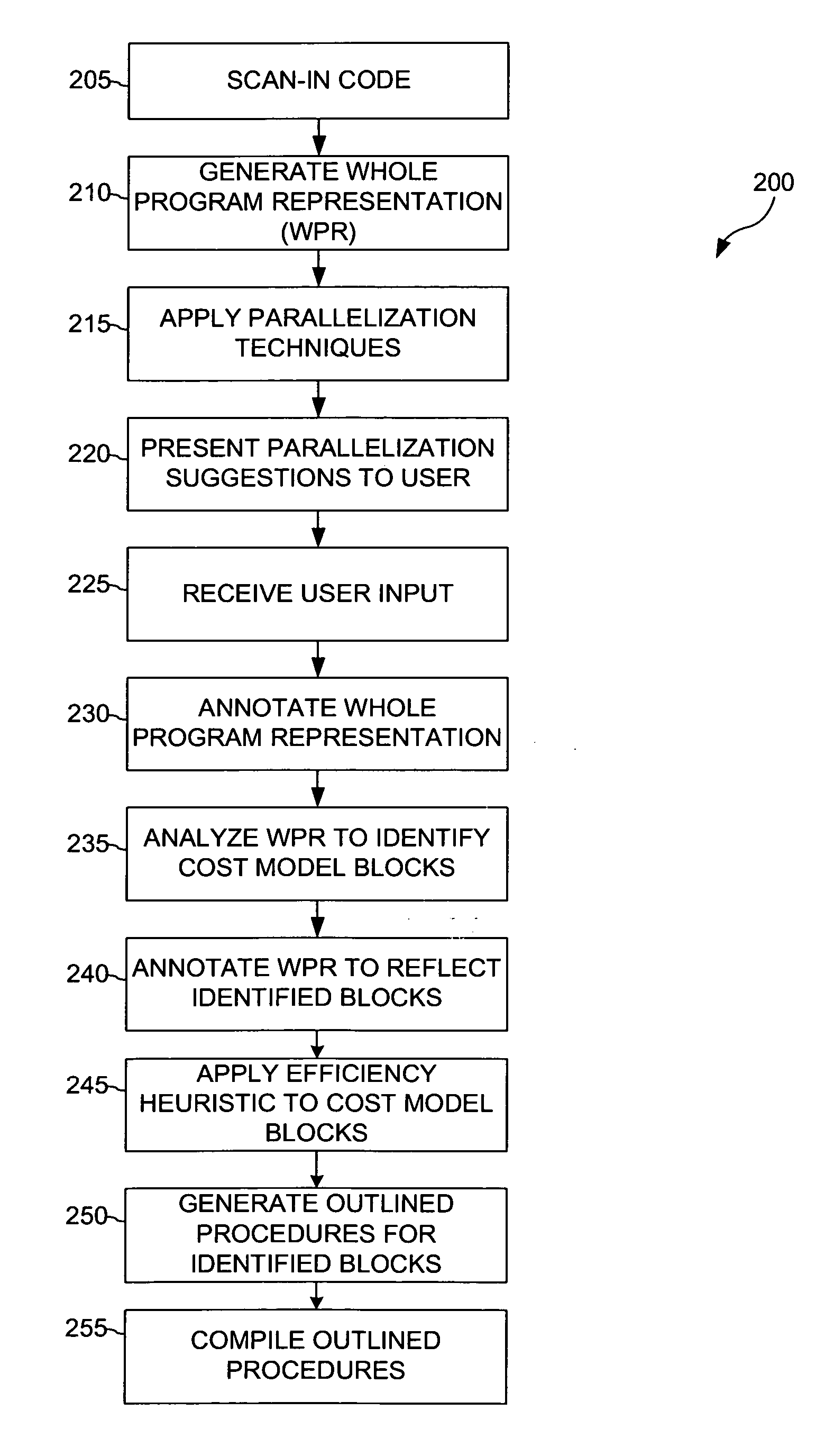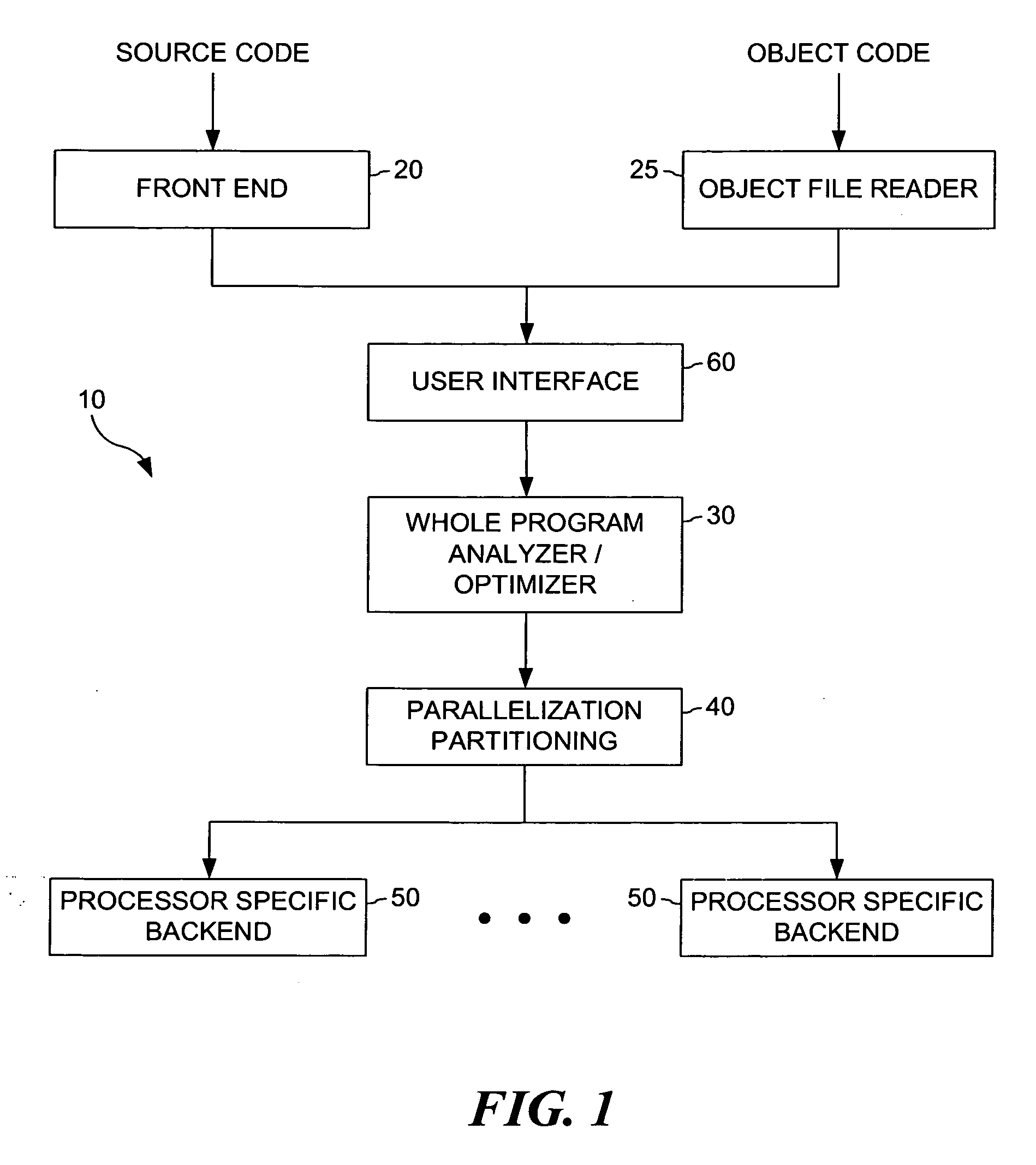Method and system for exploiting parallelism on a heterogeneous multiprocessor computer system
a multiprocessor computer system and parallelism technology, applied in the field of computer program development, can solve the problems of inability to completely perform certain functions of processors, increase programming complexity, and excessive laborious task of programming for high performance, and achieve the effect of freeing application programmer
- Summary
- Abstract
- Description
- Claims
- Application Information
AI Technical Summary
Benefits of technology
Problems solved by technology
Method used
Image
Examples
Embodiment Construction
[0014] Herein we disclose a method of compilation that extends existing parallelization techniques for homogeneous multiprocessors to a heterogeneous multiprocessor of the type described above. In particular, the processor we target comprises a single main processor and a plurality of attached homogeneous processors that communicate with each other either through software simulated shared memory (such as, for example, associated with a software-managed cache) or through explicit data transfer commands such as DMA. The novelty of this method lies, in part, in that it permits a user to program an application as if for a single architecture and the compiler, guided either by user hints or using automatic techniques, which will take care of the program partitioning at two levels: it will create multiple copies of segments of the code to run in parallel on the attached processors, and it will also create the object to run on the main processor. These two groups of objects will be compile...
PUM
 Login to View More
Login to View More Abstract
Description
Claims
Application Information
 Login to View More
Login to View More - R&D
- Intellectual Property
- Life Sciences
- Materials
- Tech Scout
- Unparalleled Data Quality
- Higher Quality Content
- 60% Fewer Hallucinations
Browse by: Latest US Patents, China's latest patents, Technical Efficacy Thesaurus, Application Domain, Technology Topic, Popular Technical Reports.
© 2025 PatSnap. All rights reserved.Legal|Privacy policy|Modern Slavery Act Transparency Statement|Sitemap|About US| Contact US: help@patsnap.com



